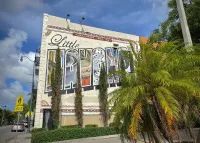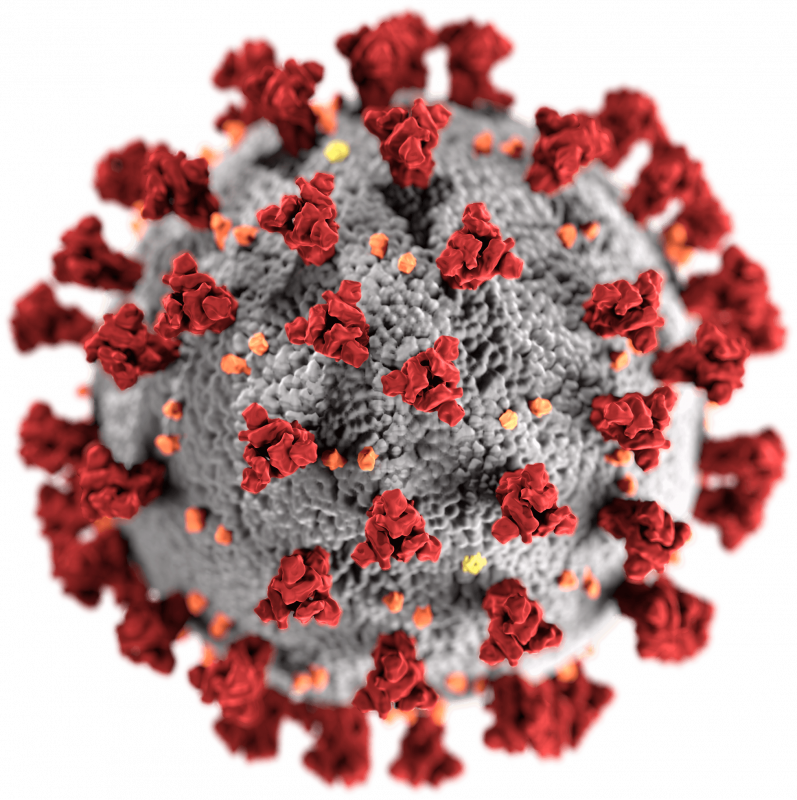Lake Worth Beach, Florida, is a city in Palm Beach County, situated approximately 63 miles north of Miami. Its name originates from the Lake Worth Lagoon, named after General William J. Worth. Bordered by West Palm Beach, Lake Clarke Shores, Palm Springs, and Lantana, it also shares a border with Palm Beach. The city's population has grown from 34,910 in 2010 to 42,219 in 2020, and it is part of the Miami metropolitan area, which had over 6 million residents in 2020.
6 hours ago : Lake Worth: Man terrorizes park with knife, cemeteries receive protection.
A Lake Worth man was accused of terrorizing Bryant Park with a knife. Pinecrest and I.A. Banks cemeteries received long-needed protection from neglect and vandalism, ensuring preservation.
1903: Post Office Closure
In 1903, Fannie James ceased operating the Jewell Post Office, which had served the residents between Lantana and West Palm Beach.
1903: Fannie James ceases as postmaster
In 1903, Fannie James stopped serving as postmaster for the Jewel Post Office, which was located in a small dry goods shop and served lake traffic along the Lake Worth Lagoon.
1909: Death of Samuel James
After Samuel's death in 1909, Fannie James sold her remaining 156 acres to the Palm Beach Farms Company, keeping a 1.25-acre farmette.
1909: The Palm Beach Post Founded
In 1909, The Palm Beach Post was founded as the weekly Palm Beach County.
April 1911: Description of Lake Worth
In April 1911, an article described the area where Lake Worth was growing as "a solitary Indian mound surrounded by wild woods."
1911: Palm Beach Farms Company Development
From 1911 to 1912, the Palm Beach Farms Company platted approximately 7,000 residential lots and constructed about 55 miles of roads, including Lake Avenue.
May 1912: Residents requested book donations for the library
In May 1912, residents requested book donations via an advertisement in the Lucerne Herald newspaper for the library.
July 1912: Population Increase
In July 1912, the population of Lake Worth increased from 38 to 308 due to a land development scheme.
December 1912: First Census of Lake Worth
In December 1912, the town's first census indicated 308 residents, 125 houses, 10 wagons, 7 automobiles, 36 bicycles, and 876 fowls.
1912: Construction of contributing buildings began in Historic Old Town Commercial District
Construction of contributing buildings in the Historic Old Town Commercial District began in 1912. These buildings are generally of Masonry Vernacular-style architecture.
1912: Construction of Historical Homes
In 1912, seven homes were constructed, and later designated as historical properties in 2017.
1912: Lake Worth Herald Publication Began
In 1912, the Lake Worth Herald began publication as the Lucerne Herald and is considered the city's oldest business.
June 14, 1913: Incorporation of Lake Worth
On June 14, 1913, Lake Worth Beach was incorporated as the "town of Lake Worth." James Love, a carpenter and member of the Socialist Party of America, became the first elected Mayor.
June 1913: Incorporation of Lake Worth
In June 1913, the town of Lake Worth was incorporated, and James Love was elected as its first mayor.
1913: Cottages Construction
Between 1913 and 1949 many cottages were constructed.
1913: Structures constructed in Old Lucerne Historic Residential District
Construction of structures in the Old Lucerne Historic Residential District began around 1913. The district is the section of Lake Worth Beach where Samuel and Fannie James lived.
1913: Lake Worth Beach Fire Department Established
In 1913, Lake Worth Beach established its own fire department.
1913: Segregation Provisions in Charter
In 1913, the segregation provisions of the town of Lake Worth charter required Fannie James' farmette to lie outside the new city limits.
1914: Lake Worth Water, Light, and Ice Company Founded
In 1914, the Lake Worth Water, Light, and Ice Company was founded to serve about 600 residents.
1917: Osborne Colored Addition
In 1917, the Osborne Colored Addition, a small African American neighborhood, was plotted along the south end of Lake Worth and west of the FEC.
1919: Bridge Construction and Land Deed
In 1919, a wooden automobile traffic bridge over Lake Worth was completed, and the Brelsford family deeded a 1,000 ft parcel of land on the barrier island to the town.
1920: Population and Bond Issue
In 1920, Lake Worth's population was 1,106, and a $100,000 bond issue was approved for construction.
1922: Lake Worth Community High School Construction
In 1922, Lake Worth Community High School was constructed.
1922: Establishment of Lake Worth Community High School
In 1922, Lake Worth Community High School was established, making it the oldest continuously operating high school in Palm Beach County.
1924: Boutwell as City Commissioner
From 1924 to 1927, William A. Boutwell served as a Lake Worth city commissioner.
1924: Construction of Buildings and Neighborhoods
In 1924, many commercial and industrial buildings and neighborhoods, including College Park and Lake Worth Heights, were built.
1925: Construction in College Park
Construction began in the College Park neighborhood in 1925. The neighborhood is a historic district listed in the National Register of Historic Places.
1925: Lake Worth Reincorporation
In 1925, Lake Worth reincorporated as a city, and its boundaries expanded.
1926: Vote to establish Lake Worth Public Library
In 1926, residents voted to officially establish the Lake Worth Public Library and allot $6,000 for the construction of a building, but the funds remained insufficient.
1927: Boutwell Dairy Established
In 1927, William A. Boutwell established Boutwell Dairy.
1928: Okeechobee hurricane virtually demolished the Oakley Theatre
In 1928, the Oakley Theatre was virtually demolished by the Okeechobee hurricane.
1928: Okeechobee Hurricane
In 1928, the Okeechobee hurricane devastated Lake Worth, destroying about 600 homes, damaging 1,500 others, and causing approximately $4 million in damages and three deaths.
1929: Opening of the Oakley Theatre
In 1929, the building that would later house the Lake Worth Playhouse originally opened as the Oakley Theatre.
1930: Population Growth
By 1930, Lake Worth's population had increased to nearly 6,000 due to the Florida land boom.
1933: Founding of Palm Beach Junior College
In 1933, Palm Beach Junior College, now Palm Beach State College, was founded as the oldest community college in Florida.
1933: Sam J. Schlappich featured in the Century of Progress Fair
Local artist Sam J. Schlappich, who created wood carvings housed in the Lake Worth Public Library, was featured in the Century of Progress Fair in 1933.
1938: Previous Bridge
In 1973, the Robert A. Harris Bridge opened, replacing the previous bridge built in 1938.
1939: Congress approves bill for library construction
In 1939, Congress approved a bill allotting $60,000 to construct a building bearing the name Major General William Jenkins Worth Memorial Library.
1940: Opening of Lake Theatre
In 1940, the Lake Theatre opened at 601 Lake Avenue, with a seating capacity of 1,000.
1940: Population in 1940
In 1940, the population of Lake Worth was 7,406.
August 12, 1941: Dedicatory service held for Lake Worth Beach Public Library
On August 12, 1941, a dedicatory service was held for the Lake Worth Beach Public Library, housed in a Mediterranean-style building completed at a cost of $66,000.
1941: Completion of the Lake Worth Public Library
In 1941, the Lake Worth Public Library was completed after community residents continued raising funds.
1947: Replacement of Original Casino Building after Hurricane
After the 1947 hurricane, the original 1920s casino building was replaced by a more modern, boxy structure.
1947: Hurricane Impact
In 1947, a hurricane damaged nearly all businesses and about half of the homes in Lake Worth, with the Lake Worth Casino experiencing substantial impact.
1948: Palm Beach County's voting history
From 1948, Palm Beach County consistently voted for the Republican Party nominee for president of the United States.
1948: Construction of Osborne School
In 1948, the Osborne School, also known as Osborne Elementary School, was constructed in Lake Worth Beach.
1949: Cottages Construction
Between 1913 and 1949 many cottages were constructed.
1949: Construction in College Park
Construction in the College Park neighborhood continued until 1949. The neighborhood is a historic district listed in the National Register of Historic Places.
1949: Construction of contributing buildings ended in Historic Old Town Commercial District
Construction of contributing buildings in the Historic Old Town Commercial District ended in 1949. These buildings are generally of Masonry Vernacular-style architecture.
1949: Hurricane Impact
In 1949, a hurricane made landfall in Lake Worth, damaging around 300-400 homes and deroofing many homes in the Osborne Colored Addition.
1951: Structures constructed in Old Lucerne Historic Residential District
Construction of structures in the Old Lucerne Historic Residential District continued until 1951. The district is the section of Lake Worth Beach where Samuel and Fannie James lived.
1953: Lake Worth Playhouse Founding
The Lake Worth Playhouse was founded in 1953.
1954: Erection of Concrete Wall
In 1954, a concrete wall was erected at the Osborne Colored Addition to separate it from the white Whispering Palms neighborhood.
1954: Construction of William O. Lockhart Municipal Pier
The William O. Lockhart Municipal Pier, constructed in 1954, suffered significant damage from the hurricanes in the 2000's, especially due to Frances and Jeanne, requiring $3.4 million to be repaired.
1956: Relocation of Palm Beach Junior College
In 1956, Palm Beach Junior College relocated to its present location in unincorporated Lake Worth.
1956: Boutwell's Retirement
In 1956, William A. Boutwell retired from managing Boutwell Dairy.
1961: Integration of Lake Worth High Community High School
In 1961, John Green and Theresa Jakes Kanu were among the first black students to attend Lake Worth High Community High School.
1969: Coastal/Greenacres Observer Founded
In 1969, the Coastal/Greenacres Observer was founded as a sister publication to the Lake Worth Herald.
1969: City Integration
In 1969, the city of Lake Worth officially integrated.
1970: Court Order for School Integration
In 1970, a court order led to further progress on the racial integration of schools in Palm Beach County.
1971: Closure of Osborne School
In 1971, the Osborne School ceased operations due to busing policies implemented in the early 1970s.
1973: Robert A. Harris Bridge Opens
In 1973, the Robert A. Harris Bridge opened, replacing the previous bridge built in 1938. It was two lanes wider and higher. Also during 1973, the Lake Worth City Hall moved.
1973: Old City Hall Ceases Function as Administrative Center
In 1973, the old Lake Worth City Hall ceased functioning as the city's administrative center, having served in that capacity since the 1920s.
1978: Founding of the Cultural Council for Palm Beach County
In 1978, Alexander W. Dreyfoos Jr. founded the Palm Beach County Council of the Arts in West Palm Beach, which later became the Cultural Council for Palm Beach County.
1981: Filming of "Body Heat"
In 1981, a substantial portion of the movie "Body Heat", starring William Hurt and Kathleen Turner, was filmed in downtown Lake Worth Beach, which became the fictitious town of Miranda Beach for the film.
1983: Inaugural Midnight Sun Festival
The Midnight Sun Festival, originally called Finlandia Days, began in 1983 as an annual celebration of Lake Worth Beach's Finnish population at Bryant Park.
1984: Filming of Harry & Son
In 1984, the movie Harry & Son was filmed in Lake Worth Beach.
1988: Name Change to Palm Beach Community College
In 1988, Palm Beach Junior College was renamed Palm Beach Community College.
1988: Palm Beach County's voting history
Until 1988, Palm Beach County consistently voted for the Republican Party nominee for president of the United States.
1989: Lake Worth Beach CRA established
In 1989, the Lake Worth Beach CRA was established to redevelop properties for community and economic growth.
1989: Tri-Rail Station Opened
In 1989, the Tri-Rail commuter rail system began serving Lake Worth Beach with the opening of the Lake Worth Beach station.
1989: Former City Hall listed in NRHP
In 1989, the former City Hall, which includes the Lake Worth Historical Museum, was listed in the National Register of Historic Places.
1994: Neighborhood Name Change
In 1994, the Osborne Colored Addition was renamed.
1996: Ordinance to Preserve Historic Structures Approved
In 1996, the city commission approved an ordinance aimed at preserving historic structures and districts in Lake Worth Beach.
1997: Downtown Property Value Increase
In 1997, downtown property values in Lake Worth increased for the first time since the late 1980s due to restoration efforts.
2000: Lake Worth Beach had the twentieth highest percentage of Guatemalan residents
As of 2000, Lake Worth Beach had the twentieth highest percentage of Guatemalan residents in the United States, with 4.87% of the populace.
2000: Population and racial makeup of the city
As of the census of 2000, there were 35,133 people residing in the city. The racial makeup of the city was 65.12% White (48.1% were Non-Hispanic White), 18.86% African American, 0.78% Native American, 0.75% Asian, 0.11% Pacific Islander, 9.57% from other races, and 4.82% from two or more races.
2000: Household composition in 2000
In 2000, 26.0% of households had children under the age of 18 living with them, 36.9% were married couples living together, 11.5% had a female householder with no spouse present, and 44.4% were non-families.
2000: Age Distribution of the Population
In 2000, the age distribution of the population was spread out, with 22.9% under the age of 18, 10.6% from 18 to 24, 32.6% from 25 to 44, 19.6% from 45 to 64, and 14.3% who were 65 years of age or older. The median age was 35 years.
2000: Median income and poverty levels in 2000
In 2000, the median income for a household in the city was $30,034, and the median income for a family was $35,374. About 15.8% of families and 20.0% of the population were below the poverty line.
2000: Languages spoken in Lake Worth Beach
In 2000, the three most spoken first languages in Lake Worth Beach were English at 56.61%, Spanish at 26.57%, and French Creole at 9.17% of the population. Finnish was spoken by 2.57% of the city's residents as their native language.
2001: Historic Old Town Commercial District listed in NRHP
In 2001, the Historic Old Town Commercial District was listed in the National Register of Historic Places. The district encompasses much of downtown Lake Worth Beach.
2001: CRA area expansion
Since 2001, the CRA area has included the entirety of Dixie Highway and areas in the vicinity of 6th Avenue South and 10th Avenue North.
2004: Repair and Raising of William O. Lockhart Municipal Pier
Following Hurricane Frances in 2004, the William O. Lockhart Municipal Pier was repaired and raised 5 feet (1.5 m).
2004: Hurricanes Frances and Jeanne
In 2004, Lake Worth was hit hard by hurricanes Frances and Jeanne, causing significant damage to the William O. Lockhart Municipal Pier.
2005: Greenhouse Gas Emissions Base Level
Citizen Owned Energy forecasts that greenhouse gas emissions generated by the Lake Worth Beach Electric Utility will decrease to less than half of its 2005 levels by 2024.
2005: Hurricane Wilma
In 2005, Hurricane Wilma destroyed 27 homes and 7 businesses in Lake Worth, causing approximately $28.3 million in damages.
2005: Gulf Stream Hotel closed to the public
The Gulf Stream Hotel has been closed to the public since 2005. In March 2020, voters approved a proposal to renovate the hotel in order to reopen it.
2007: Crime Statistics
From 2007 to 2014, crime in Lake Worth decreased after the municipal police department was replaced by the Palm Beach County Sheriff's Office.
2008: Lake Worth Police Department Disbanded
In 2008, city commissioners narrowly voted to disband the Lake Worth Police Department, with law enforcement duties being taken over by the Palm Beach County Sheriff's Office (PBSO).
2009: Fire Department Merged
In 2009, the Lake Worth Beach Fire Department merged with Palm Beach County Fire Rescue (PBCFR).
2010: Population and Housing Data from 2010 United States Census
According to the 2010 United States Census, there were 34,910 people, 12,466 households, and 6,744 families residing in Lake Worth Beach.
2010: Age distribution in 2010
As of 2010, the age distribution in the city was 5.2% at 65 or older, 22.2% was under 18, 17.0% from 18 to 24, 31.1% from 25 to 44, and 24.5% from 45 to 64; the median age was 35 years.
2010: Name Change to Palm Beach State College
In 2010, Palm Beach Community College was renamed Palm Beach State College.
2010: 2010 Census
In 2010, the census recorded the population of Lake Worth Beach as 34,910.
2012: Cultural Council relocation to Lake Worth Beach
In 2012, the Cultural Council for Palm Beach County relocated from West Palm Beach to the Robert M. Montgomery Jr. Building in Lake Worth Beach.
2013: Reopening of the Lake Worth Casino Complex
In 2013, the Lake Worth Casino complex reopened after a two-year, $6 million renovation.
2014: Crime Statistics
From 2007 to 2014, crime in Lake Worth decreased after the municipal police department was replaced by the Palm Beach County Sheriff's Office.
2015: Increase in Drug Overdose Deaths
From 2015 to 2016, the number of suspected drug overdose deaths in Lake Worth Beach rose by 56%.
2015: Business License Controversy
In 2015, the city of Lake Worth was accused of requesting business licenses from surrounding churches, but the problems were resolved.
2015: County and statewide medians
The county and statewide medians from 2015-2019, was $63,299 and $55,660, respectively.
2016: Publication of Cottages of Lake Worth Beach - Living Large in Small Spaces
According to the 2016 book Cottages of Lake Worth Beach - Living Large in Small Spaces, approximately 1,000 cottages remain, constituting the largest concentration of this type of dwelling in Florida.
2016: Overdose Death Rate
As of 2016, the estimated rate of overdose deaths in Lake Worth Beach was 20 out of every 10,000 people, higher than in neighboring towns.
2016: Violent Crime Rate Dropped
From 2016 to 2018, violent crime rates in Lake Worth Beach dropped by double-digit percentages for three consecutive years.
November 2017: The Palm Beach Post's Circulation
In November 2017, The Palm Beach Post had the fifth largest newspaper circulation in Florida.
2017: Solar Farm Operation Started
In 2017, Lake Worth Beach purchased and began operating a solar farm, becoming the first municipality in Florida to do so.
2017: Lois Frankel represents Florida's 21st congressional district
In 2017, Lois Frankel (D) began representing Florida's 21st congressional district, which includes Lake Worth Beach.
2017: Designation of Historical Properties
In 2017, seven homes constructed in 1912 were designated as historical properties by the Lake Worth Beach Department of Community Sustainability and Division of Planning, Zoning and Historic Preservation.
May 2018: PBSO Overdose Report
Between May 2018 and April 2019, PBSO reported 354 overdoses in Lake Worth Beach. Between May 2019 and April 2020, PBSO reported 301 overdoses.
2018: Violent Crime Rate Dropped
From 2016 to 2018, violent crime rates in Lake Worth Beach dropped by double-digit percentages for three consecutive years.
April 2019: PBSO Overdose Report
Between May 2018 and April 2019, PBSO reported 354 overdoses in Lake Worth Beach. Between May 2019 and April 2020, PBSO reported 301 overdoses.
May 2019: PBSO Overdose Report
Between May 2018 and April 2019, PBSO reported 354 overdoses in Lake Worth Beach. Between May 2019 and April 2020, PBSO reported 301 overdoses.
2019: Lake Worth Beach Electric Utility Customers
As of 2019, Lake Worth Beach Electric Utility had approximately 27,000 customers.
2019: Labor force statistics in 2019
As of 2019, Lake Worth Beach had an estimated labor force of 19,978 people. Only 6.9% of jobs in Lake Worth Beach were held by city residents, with the most common other residencies being West Palm Beach (12.4%), Boca Raton (5.3%), Palm Springs (4.9%), Boynton Beach (4.8%), and Delray Beach (3.7%).
2019: Median household income and poverty rate
As of 2019, the median household income in Lake Worth Beach was $42,500, and an estimated 24.4% of residents were considered impoverished.
2019: Hispanic whites represented a plurality of the population
In 2019, Hispanic whites represented a plurality of the population in Lake Worth Beach.
2019: More mailing addresses for unincorporated Lake Worth than incorporated Lake Worth Beach
In 2019, The Palm Beach Post noted that there are more mailing addresses for the unincorporated area of Lake Worth than for the proper, incorporated area of Lake Worth Beach.
2019: Ballot initiative to change the name of the city to Lake Worth Beach passes
In 2019, a ballot initiative to change the name of the city to Lake Worth Beach passed by a narrow margin. The city stated the name change would be implemented slowly, with the goals of distinguishing the city from its suburbs and increasing tourism by rebranding as a beach town.
2019: Name Change
In 2019, residents voted to change the official name of the town to Lake Worth Beach.
2019: Violent Crime Rate Increased
In 2019, the violent crime rate in Lake Worth Beach increased by 5.2% from the previous year, attributable to an increase in aggravated assaults.
March 2020: Controversy over electrical services during COVID-19 pandemic
In March 2020, Lake Worth Beach's city government became embroiled in a controversy garnering national headlines after a heated discussion between then-Mayor Pam Triolo and Commissioner Omari Hardy over the potential for shutting off electrical services due to non-payment amid the COVID-19 pandemic lockdowns.
March 2020: Voters strongly approved Gulf Stream Hotel renovation
In March 2020, voters strongly approved the renovation of the Gulf Stream Hotel, which has been closed since 2005, by a margin of 81.82% – 18.18%.
April 2020: PBSO Overdose Report
Between May 2019 and April 2020, PBSO reported 301 overdoses in Lake Worth Beach. Between May 2018 and April 2019, PBSO reported 354 overdoses.
July 2020: City commissioners voted to resume power shutoffs
In July 2020, city commissioners unanimously voted to resume power shutoffs. Prior to this vote, the city government had allowed electrical service to residents to remain uninterrupted for the prior few months, with or without payment, in response to the COVID-19 pandemic.
December 2020: Little Free Library system distributed approximately 500,000 books
By December 2020, the Little Free Library system in Lake Worth Beach had distributed approximately 500,000 books, thanks to the efforts of resident Mary Lindsey and over 120 volunteers.
2020: Population and Housing Data from 2020 United States Census
According to the 2020 United States Census, Lake Worth Beach had a population of 42,219 people, 12,947 households, and 7,046 families residing in the city. Approximately 76.5% of residents of the city were age 18 and over.
2020: Lake Worth Beach population in 2020
According to the 2020 census, Lake Worth Beach had a population of 42,219 residents, ranking as the ninth largest city in Palm Beach County.
2020: Joe Biden defeated Donald Trump in all of the city's precincts
In 2020, Joe Biden defeated Donald Trump in all of the city's precincts and in most by a margin of at least 20%.
2020: 2020 Census
In 2020, the census recorded the population of Lake Worth Beach as 42,219, and the Miami metropolitan area, which includes Lake Worth Beach, was home to an estimated 6,138,333 people.
March 16, 2021: Betty Resch becomes mayor
On March 16, 2021, Betty Resch began her service as mayor of Lake Worth Beach.
May 2021: Solar Energy Percentage
By May 2021, more than 38% of the power generated by Lake Worth Beach Electric Utility originated from solar energy.
September 2021: Unemployment Rate in September 2021
Lake Worth Beach had a non-seasonally adjusted unemployment rate of 4.2% in September 2021.
December 2021: Voter registration data
As of December 2021, Lake Worth Beach had 17,738 registered voters, with a majority affiliated with the Democratic Party.
2021: Percentage of residents born outside of the United States
As of 2021, approximately 38.7% of residents in Lake Worth Beach were born outside of the United States, many of whom immigrated from the Caribbean or Latin America.
2024: Projected Greenhouse Gas Emissions Reduction
Citizen Owned Energy forecasts that greenhouse gas emissions generated by the Lake Worth Beach Electric Utility will decrease to less than half of its 2005 levels by 2024.
Mentioned in this timeline

Donald John Trump is an American politician media personality and...
The United States of America is a federal republic of...

Joseph Robinette Biden Jr served as the th U S...

Miami is a coastal city located in South Florida serving...
Florida a southeastern U S state is a peninsula between...

Fire is a rapid oxidation process specifically combustion that releases...
Trending

18 minutes ago Stock Market Climbs Amidst Moody's Downgrade and Debt Concerns: Key Takeaways

1 hour ago Riley Gaines praised after protest; Transgender athlete wins titles amidst controversy.

1 hour ago FDA to Restrict COVID Vaccine Access for Over 65s and High-Risk Individuals.

1 hour ago Bill Belichick Reportedly Engaged to Jordon Hudson: Bombshell Claims Spark Media Frenzy
2 hours ago Daan Hoole wins Giro d'Italia Stage 10 time trial; Del Toro retains lead.

2 hours ago Giancarlo Stanton possibly to Mariners after Yankees setback; Injury return approaches.
Popular

Jupiter the fifth planet from the Sun is the Solar...

Cristiano Ronaldo often nicknamed CR is a highly decorated Portuguese...

Michael Jordan also known as MJ is an American businessman...

LeBron James nicknamed King James is a professional basketball player...

Steve Irwin the Crocodile Hunter was an influential Australian zookeeper...

Pope Francis is the current head of the Catholic Church...